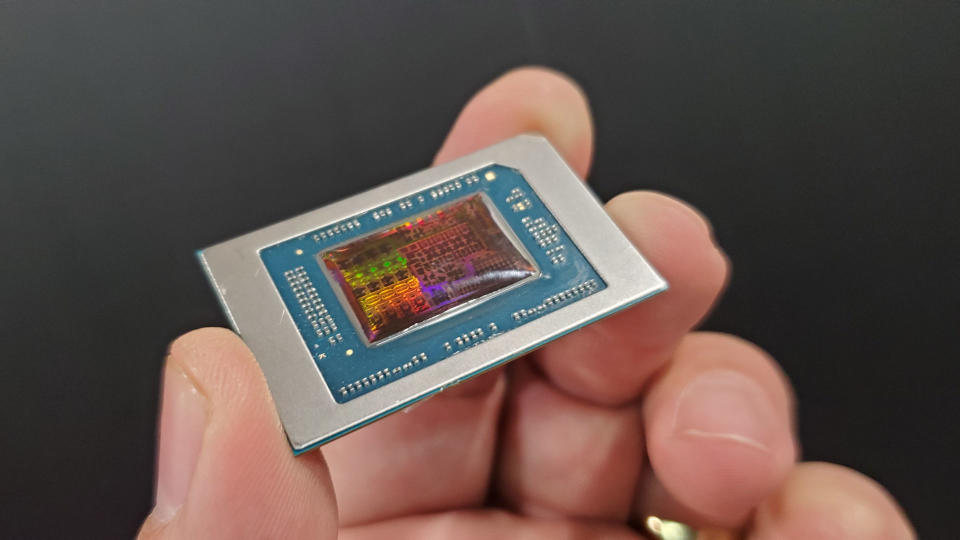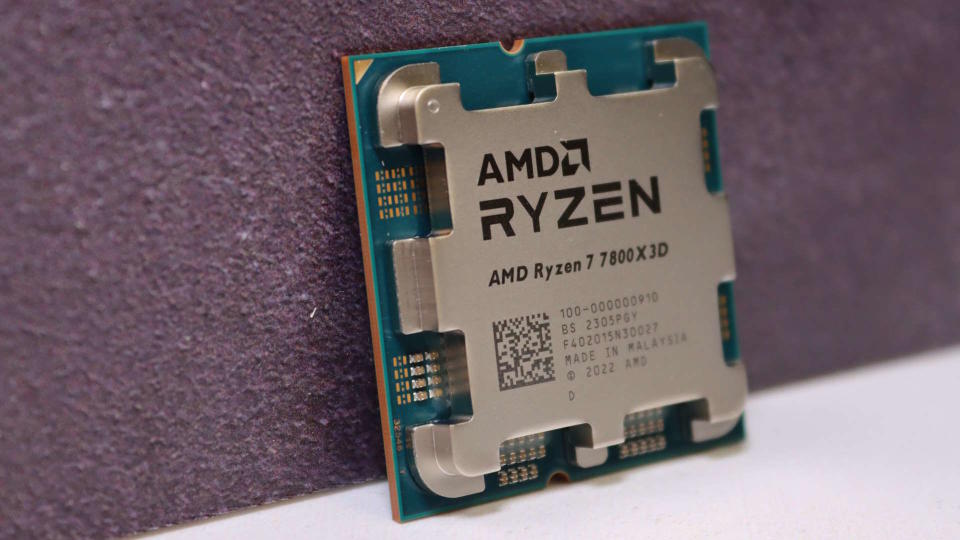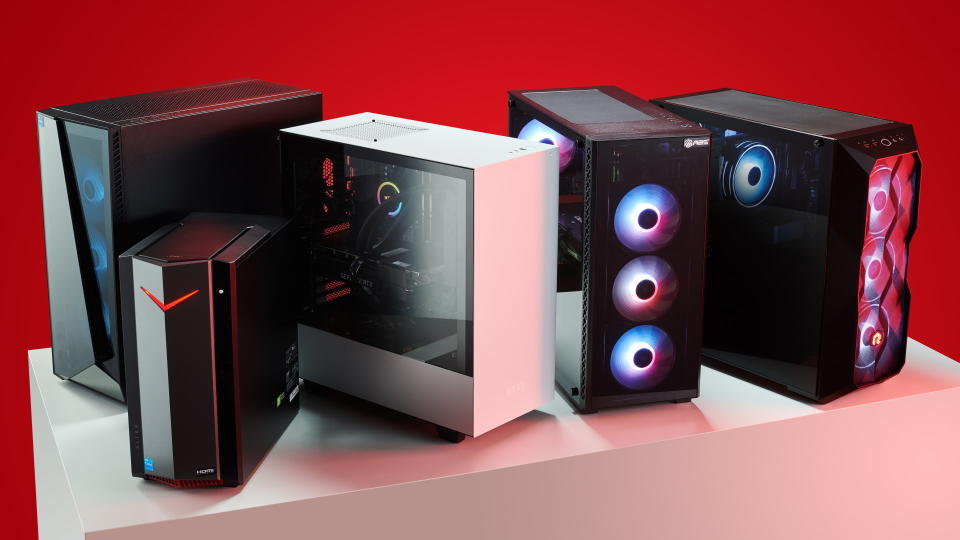Nick Evanson, Hardware Writer

This month I tested: Gaming mice and Elden Ring. Two things that normally don’t interest me that much, but the former has shown that they are no longer clunky, niche things and are actually great to use. The latter, however, is still the same as it ever was, for better or worse.
AMD is really on top of its game. Do you want the best possible gaming CPU? Buy an AMD Ryzen 7 7800X3D. Need to throw a lot of cores at a rendering project? If money is no object, use an AMD Ryzen 9 7950X or a Threadripper Pro 7995WX. The same goes for servers, AI megacomputers, consoles and portable gaming PCs: AMD rules. And yet, with its upcoming Zen 5 chips, AMD is also driving an increasing wedge between the CPUs it has for mobile platforms and those for the mainstream desktop PC.
Just a few years ago, the only significant differences between a Ryzen CPU in a laptop and one in a desktop were the number of cores, clock speeds, and the amount of L3 cache. These were all typically lower for mobile chips to keep the chip smaller and within a certain power budget. However, the cores themselves were exactly the same between the two.
Take AMD’s Z1 Extreme chip in the Asus ROG Ally. That has eight cores, 16 threads, a boost clock of 5.1GHz, and a 30W power cap. Each of those cores is the exact same Zen 4-powered core that you’ll find in a Ryzen 9 7950X, a Threadripper Pro 7995WX, or even an Epyc 9654. They just share a smaller amount of L3 cache.
But when AMD developed Zen 4c, a compact version of the ‘normal’ Zen 4-core, things started to change. For example, the original Ryzen 5 7540U laptop APU had six Zen 4 cores, but then the chip giant updated it so that four of those cores used the Zen 4c architecture.
“Nobody would ever know the difference,” AMD claimed, but that’s not entirely true. The Zen 4c cores don’t boost as high as the Zen 4 cores.
However, in terms of instruction throughput, latencies and capabilities, there is no difference between the two. It’s a fundamentally different approach to Intel’s hybrid CPU design, with the P-cores and E-cores not looking very similar at all.
With the upcoming Strix Point APUs (and possibly the bulky Strix Halo), AMD seems to be shifting a little more towards Intel’s way of thinking. The Ryzen AI 9 365 has 10 cores, four of which are Zen 5 and the other six Zen 5c. Of course, there’s nothing wrong with that, except that the former gets to share 16 MB of L3 cache, while the latter has to make do with just 8 MB.


And that’s not the only change. Some early, in-depth testing of that chip design strongly suggests that AMD has tweaked the capabilities of the SIMD/vector units inside the APU’s cores compared to those expected for the desktop Zen 5 chips. At this stage, it’s not clear how (if at all) AMD is managing the threads on these new APUs, as it’s clear that anything processed on the Zen 5c cores isn’t going to be processed as quickly as what’s processed on the regular cores; higher clocks and less L3 cache shared across a larger core count will only slow things down a bit.
Early benchmarks show that this isn’t actually a problem (so perhaps AMD has built in some advanced thread management), but it does mean that Ryzen APUs in laptops are increasingly different from each other, in terms of hardware and capabilities, than Ryzen CPUs in desktop PCs, that consist of only one type of core, Zen 5.
The die space and energy budget for the NPU could have been better spent
Is that a bad thing? Well, you could argue that this only seems to be the case for AMD’s new APUs so far and that the high-end laptop processors could just as easily resemble the current Ryzen 9 7945HX – essentially a Ryzen 9 7950X but with lower clock speeds and a much lower power limit.
Intel has a full range of different architecture designs for its laptop chips, from the hulking Raptor Lake-based models similar to the 7954HX, to the current multi-tile Meteor Lake Core Ultra range, and up to the soon-to-be-here Lunar Lake chips for ultra-mobile, low-power platforms.
The Zen architecture, followed by the switch from monolithic to chiplet production, saved AMD from eternal gloom. That single core design could be applied anywhere in the processor market, from handheld PCs to massive server chips. Now it seems that AMD is taking an example from Intel and increasing segmentation in its chip portfolio.
Of course, this could be a design born out of necessity, as it could be that ‘normal’ Zen 5 cores are simply not power efficient enough to be used in power-constrained applications, such as APUs in laptops. I say cores, but I’m actually talking about the entire CCX, the core complex, because you can’t leave the L3 cache out of the equation.
As a reminder, the four Zen 5 cores in the Ryzen 9 AI 365 and 370HX share a total of 16MB of L3 cache, which works out to 4MB each. However, the Zen 5c cores (six in the 365, eight in the 370HX) only get 8MB and that will certainly impact performance. Less cache means fewer transistors, which ultimately means the entire CCX consumes less power.
Another aspect of why these design choices are necessary is AI. The NPU (neural processing unit) in the Strix Point chip takes up a significant amount of valuable die space, and there’s an argument to be made that the die space and power budget for the NPU could have been put to better use. That ship has long since sailed, of course.
I’m pretty sure that if this wasn’t the case, the new APUs would be capable of 12 full Zen 5 cores with plenty of cache. This is purely based on the amount of space they take up compared to the NPU.
But what if this isn’t about power consumption or AI? What if it’s simply about increasing portfolio segmentation between laptop and desktop processors? Now I know what you’re thinking: there’s little to no overlap between these markets, because the vast majority of laptop purchases aren’t made by individuals who are torn between buying a portable PC or a huge desktop.


And it’s not like AMD is doing an Nvidia thing, where it uses the same model name for both its desktop and laptop GPUs, even though they’re all at least one tier below it. For example, laptops with an RTX 4090 don’t have the AD102 inside; it’s the AD103, the same chip used in RTX 4080 graphics cards. You’re definitely not going to get 4090 desktop performance on a 4090 laptop.
Your next machine


Best gaming pc: The best pre-built machines.
Best gaming laptop: Great devices for mobile gaming.
You could criticize AMD’s Ryzen AI branding, but at least it doesn’t give its APUs the same names as its desktop chips. For example, no one is ever going to confuse a Ryzen AI 9 370HX with a Ryzen 9 9950X. Oh well, there’s always going to be someone who doesn’t understand the difference, but at least any confusion arising isn’t intentional.
I don’t think AMD is intentionally trying to make its new Ryzen APUs less capable than desktop Ryzens. This is simply an unfortunate side effect of trying to keep chips as small and power efficient as possible while also offering more cores than ever before and continuing the now ubiquitous AI trend.
The Strix Point and Strix Halo look like very good APUs, but it’s a shame that we’ll likely never see an APU that’s a cross between, say, a Ryzen 7 7800X3D and a Radeon RX 7700 XT.
That would be an incredible APU, better than Halo Point, but due to production costs and power consumption it’s unlikely to ever see the light of day. Can you dream?